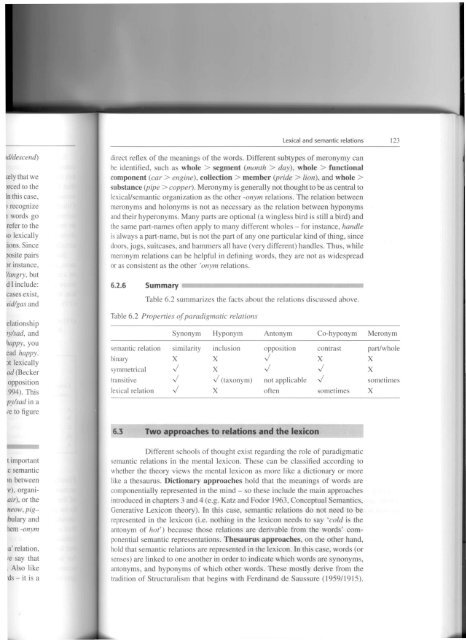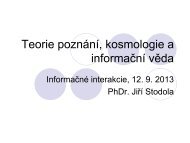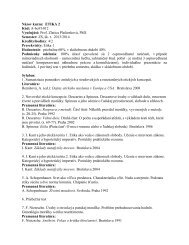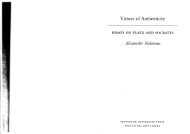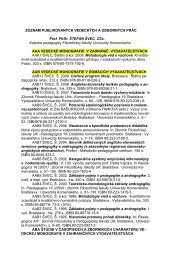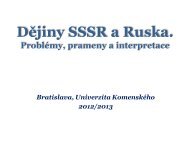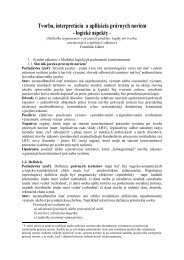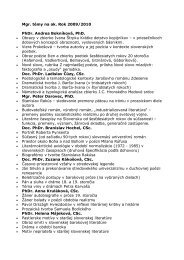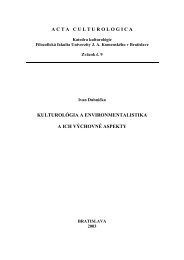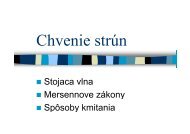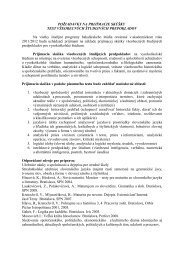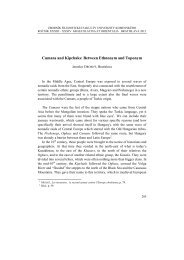You also want an ePaper? Increase the reach of your titles
YUMPU automatically turns print PDFs into web optimized ePapers that Google loves.
d/descend)<br />
ely that we<br />
erced to the<br />
ln thi case,<br />
) recognize<br />
l word go<br />
refer to the<br />
;0 lexicaJly<br />
ion. Since<br />
po ite pair<br />
)r in tance,<br />
Vangry but<br />
dl include:<br />
ca es exist,<br />
uid/gas <strong>and</strong><br />
elation hip<br />
ry/sad, <strong>and</strong><br />
happy, you<br />
ead happy.<br />
ot <strong>lexical</strong>ly<br />
ad (Becker<br />
oppo ition<br />
1994). This<br />
'Py/sad in a<br />
ve to figure<br />
t important<br />
c emantic<br />
)fi between<br />
'e), organiair),<br />
or the<br />
neow.pigibulary<br />
<strong>and</strong><br />
bem -onym<br />
.a' relation,<br />
le say that<br />
,Alo like<br />
'ds - it is a<br />
Lexical <strong>and</strong> <strong>semantie</strong> <strong>relations</strong> 123<br />
direct reflex of the meaning of the words. Different ubtype of meronymy can<br />
be identified, such as whole> segment (month> day), whole> functional<br />
component (car> engine), collection> member (pride> lions, <strong>and</strong> whole><br />
substance (pipe> copper). Meronymy is generally not thought to be a central to<br />
<strong>lexical</strong>l emantic organization as the other -onym <strong>relations</strong>. The relation between<br />
meronyms <strong>and</strong> holonym i not a nece ary a the relation between hyponyms<br />
<strong>and</strong> their hyperonym . Many part are optional (a wingle bird is till a bird) <strong>and</strong><br />
the ame part-name of ten apply to many different whole - for instance, h<strong>and</strong>le<br />
is alway a part-name, but i not the part of any one particular kind of thing ince<br />
door ,jug, uitca es, <strong>and</strong> hammer all have (very different) h<strong>and</strong>les. Thu ,while<br />
meronym relation can be helpful in defining word, they are not a widespread<br />
or as con istent a the other 'onym <strong>relations</strong>.<br />
6.2.6 Summary<br />
Table 6.2 summarize the facts about the relation discussed above.<br />
Table 6.2 Properties of paradigmatic <strong>relations</strong><br />
Synonym Hyponym Antonym Co-hyponym Meronym<br />
semantic relation imilarity inclu ion oppo ition contra t part/whole<br />
binary X X J X X<br />
syrnmetrical J X J v' X<br />
transitive v' v' (taxonyrn) not applicable v' sometimes<br />
<strong>lexical</strong> relation v' X often sometime X<br />
6.3 Two approaches to <strong>relations</strong> <strong>and</strong> the lexicon<br />
Different chool of thought exi t regarding the role of paradigmatic<br />
semantic <strong>relations</strong> in the mental lexicon. These can be classified according to<br />
whether the theory views the men tal lexicon a more like a dictionary or more<br />
like a the auru . Dictionary approaches hold that the meaning of words are<br />
componentially repre ented in the mind - o the e include the main approache<br />
introduced in chapter 3 <strong>and</strong> 4 (e.g. Katz <strong>and</strong> Fodor 1963, Conceptual Semantic ,<br />
Generative Lexicon theory). In thi ca e, emantic relation do not need to be<br />
repre ented in the lexicon (i.e. nothing in the lexicon need to ay cold i the<br />
antonym of hot') becau e tho e relation are derivable from the word ' componential<br />
emantic repre entations. Thesaurus approaches, on the other h<strong>and</strong>,<br />
hold that semantic <strong>relations</strong> are represented in the lexicon, In thi ca e word (or<br />
enses) are linked to one another in order to indicate which words are synonyms,<br />
antonyms, <strong>and</strong> hyponyms of which other word . These mostly derive from the<br />
tradition of Structurali m that begin with Ferdin<strong>and</strong> de Sau ure (1959/1915).


